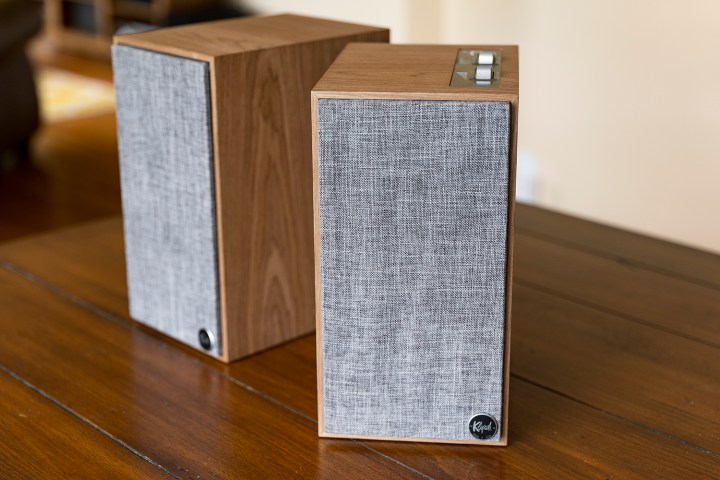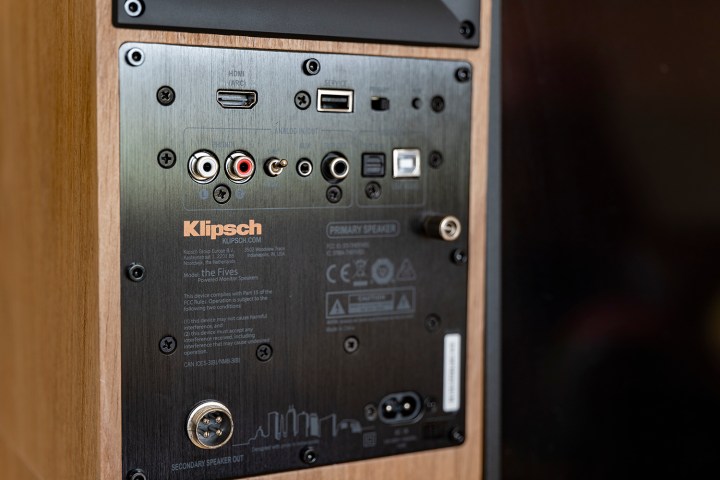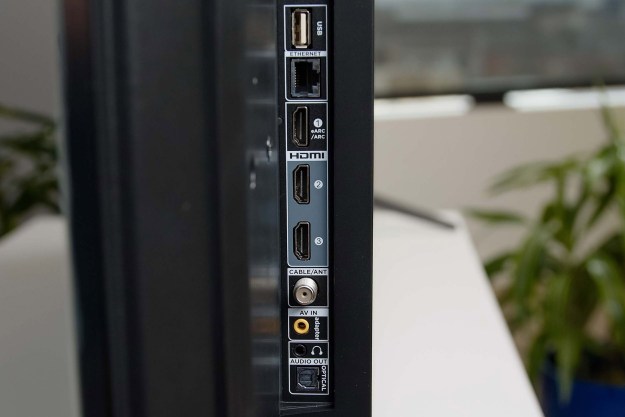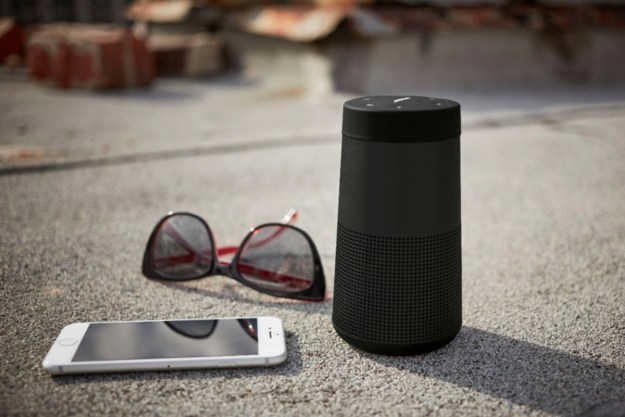Is it time to revisit your speaker setup? Maybe it’s not giving you the dynamic sound stage that you’re looking for, or maybe it’s lacking in low end. Maybe you only have a small Bluetooth speaker that isn’t delivering full-fledged jam-out power, maybe your analog system isn’t giving you the digital inputs you now need for streaming, or maybe you’re just bored and looking for some new speakers to change things up.
If you’re already the owner of a receiver/amplifier-based AV or sound system, you’re likely already familiar with traditional passive speakers. If so, you may know that one of the ways to sonically change things up is to swap them out. Each brand and style of speaker bring its own characteristics and is the most immediate way to notice a change in sound or an upgrade in sound quality. Sure, maybe you’re happy with your old garage speakers that have been reliable since high school, but you might be missing out on a depth of sound that you never knew was possible.
If you’re more of an all-in-one Bluetooth or powered speaker person, congratulations, you’re up to speed on essentially what active speakers are. But even these have come a long way over the years, and there are more options than ever that offer a wide range of inputs, connectivity, sound quality, and power to suit.
But what are active and passive speakers, what are their good points/bad points, and which should you choose? Let’s break it down.
Passive Speakers: Simpler in design and large in variety
Passive speakers are likely what you think of when you imagine speakers. They are “passive,” meaning that they simply accept what is sent to them via speaker cables. They are a puppet of their amplifier. They do not have independent volume or EQ controls and do not take electricity other than what is given by your amplifier. In a traditional speaker setup, your components (turntable, CD player, cassette player, phone, streaming device, etc.) connect to an amplifier or receiver which then boosts the volume of that sound and feeds the raised volume directly to your speakers. In this setup, the amplifier/receiver is a crucial aspect of the design, as it is the only piece of the puzzle that brings the sound to a listening level and allows you to control the volume to your speakers. Brands like Klipsch, JBL, Polk, KEF, and B&W are some of the biggest names in speakers, and they all make a wide range of great passive speakers that can range from hundreds to many thousands of dollars.
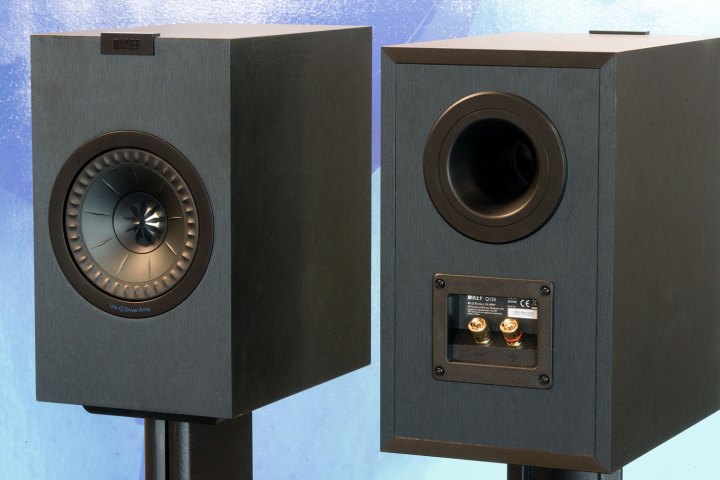
One of the largest benefits of this setup is its customization. Passive speakers are easily moved from one amplifier or receiver to the next, so long as the amplifier is large enough to drive them. Different speakers can deliver vastly different characteristics, too, allowing you to easily mix and match them with amps and receivers to tailor your perfect sound or the types of music you like to play. For example, if you’re big on bass-heavy hip hop, you could go for a speaker that has a bigger, better bass driver or a larger cabinet. With more speaker types to choose from, you can find the right speakers for your room size and shape as well — big room, bigger speakers; smaller room, smaller speakers; etc.
Passive speakers also make it easier to troubleshoot your system for issues, as each aspect is a different component. If it’s a speaker problem, you can get them repaired or buy a new pair, and the amp has nothing to do with it. It’s arguable that your money can go further here also, since you’re not paying for extra features and tech, like those found in active speakers. There’s also a large used speaker market, and it’s possible to find some great gear for a fraction of the cost. On the negative side, passive speaker setups take more space, as they require an often bulky amplifier. Passive speakers tend to have little to no extra features, as those controls are instead reliant on the amplifier itself. If you like this flexibility, a passive speaker sound system might be for you.
Pros:
- Passive speakers can be lighter and smaller when compared to active speakers
- More options for speaker styles, sizes, and brands
- Basic functions mean less chance for issues with reliability
- Expandable and customizable — amps/receivers usually have multiple speaker outputs
- Money goes further due to only buying speakers instead of speaker/amp combo
- Easier to troubleshoot, if it’s a speaker issue you just have to address it and not the whole system
Cons:
- Passive speaker setups (amplifiers, receivers, etc.) take up much more space
- No built-in Bluetooth or wireless capabilities
- Adding specific features like phono-in or streaming adds to the total cost of the system
Active speakers: Big on connectivity, ease of use
On the flip side, active speakers (also known as powered speakers) take a much more all-in-one approach, with built-in powered amplifiers housed in the same speaker unit or units. Due to their added features, they tend to be a bit bulkier and heavier, but this space is made up when considering there is no need for a separate amplifier/receiver. Some of these features can include a phono stage for your turntable, built-in Bluetooth connectivity, onboard digital audio converters (DACs) for your digital formats, and a range of others depending on the manufacturer. For example, some of the high-end KEF speakers feature everything from Wi-Fi to USB audio streaming capabilities to access your digital music library or from your computer or preferred streaming platform.
- 1. Klipsch The Fives active speakers.
- 2. Back panel of The Fives.
Similar to passive speakers, active speakers have a wide range of quality. Technically, your favorite Bluetooth speaker is an active speaker, although not exactly what we are referring to here. One of the main benefits of an active speaker is that the amplifier inside the speakers is designed with that speaker in mind. There’s no worrying about impedance matching or buying difficult-to-drive speakers with this setup. It’s also easier to move a pair of active speakers, as you don’t have to pack up several components.
In essence, active speakers offer a lot of convenience with plenty of features, and you can now find them in many flavors such as bookshelves and towers, but many lack a bit in customization or the ability to be upgraded, as they’re a packaged unit. Like passive speakers, the price range is quite wide. You can also spend hundreds to several thousands of dollars, but one of the benefits of buying an active set of powered speakers is that you can get the whole kit you need in one box and set your budget accordingly — done and done. With passive speakers, you have to consider each of the components of the setup, which is more work and can be more costly.
Pros:
- Typically feature many different types of inputs
- Wireless connectivity
- The amplifier and speaker are perfectly matched
- Save space for a smaller room or a desired aesthetic
Cons:
- Less expandable and customizable — often can’t add additional speakers
- Larger and heavier than passive speakers
- Potentially more expensive for the same audio quality as passive speakers
- Not many AUX inputs
- Typically not as powerful as traditional amplifier/passive speaker setups (but that’s changing)
Which setup is right for you?
When choosing between a set of passive or active speakers, you have a lot to consider. When buying any kind of sound system, you have to first determine the size of the room you have to fill with sound and the size and power of the system you’ll need to do it. Power and size often translate to price, in most cases. Is a set of bookshelf speakers fine, or will you need a pair of large tower speakers to fill the room? You can get both of these styles in active and passive versions.
The next question to ask is what kind of connectivity you’re looking for. Are you mainly streaming digital music to your system from a phone or computer over Bluetooth? Do you dabble in high-res audio and need Wi-Fi or a direct USB or cable connection to get the best quality? Do you want to connect your TV to your system, too? You might want to consider the connectivity that plug-and-play active speaker solutions offer. You can even connect turntables to these systems, too (more on this below). And while many modern traditional receivers and amplifiers do offer these digital connections as well, keep in mind that you’re now getting into the component realm, where you’ll need passive speakers with this setup. All these components can get costly.
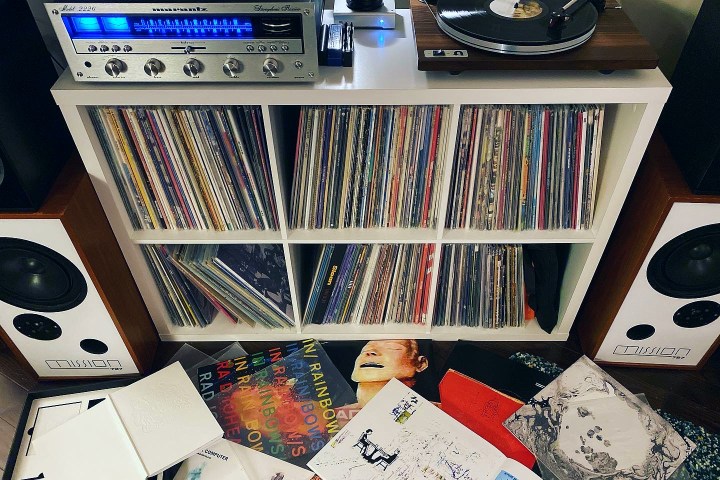
If listening to vinyl or other wired inputs is your primary thing, then you might not need all the inputs these powered systems provide, and a more traditional receiver/amplifier-plus passive speaker system might be the best choice. Once you have an amp you like, then the sky’s the limit in terms of choosing a great set of passive speakers for your needs. And, as mentioned above, you can also invest in amplifiers/receivers that have additional connectivity options, but often at a price.
Lastly, and most importantly, all this is going to be driven by your budget. Powered, active/powered speaker setups can be more cost-effective and offer a one-and-done simple solution when compared to component-based passive systems. That’s not to say that active solutions aren’t as good as passive amplifier-based setups, but with both, the better the quality, options, and power you want, the more you’ll have to spend. Neither is superior, and it comes down to personal preference, but it’s nice to have a choice. Happy shopping!
Editors' Recommendations
- Best Bluetooth speaker deals: Save on Bose, Sonos, JBL, and more
- Q Acoustics’ new 5050 floorstanding speakers are built to fill big rooms with sound
- The best speakers for 2024: great hi-fi options for music and more
- KEF launches a more affordable version of its coveted LSX II bookshelf speakers
- How to buy a soundbar: from size to subwoofers, which is the best for you?
